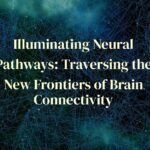
In today’s post, we delve into the lesser-known territories of pediatric genetics. Often, discussions around pediatric genetics center on common diseases, but what about the mysterious and unexplored aspects?
By diving into this post, you’ll gain insights into the rarity and complexity of genetic conditions that don’t usually make mainstream conversations. Understanding these aspects can empower you with knowledge that may benefit your child or patients you care for, enhancing early diagnosis and personalized treatments.
Table of Contents
Understanding the Basics: What Lies Beyond Common Pediatric Genetic Disorders
Diving into the uncharted realms of pediatric genetics requires a foundational understanding of what exists beyond the well-known genetic disorders. While conditions like Down syndrome, cystic fibrosis, and muscular dystrophy are widely recognized, there are lesser-known pathways that merit exploration.
In my years of experience as a healthcare professional, I’ve often encountered parents puzzled by their child’s rare genetic diagnosis. The journey begins with acknowledging that pediatric genetics is not just about diseases with well-documented histories and clear treatment protocols. It’s about being open to the mosaic of genetic variations that might reveal themselves in unexpected ways.
One crucial area is Copy Number Variations (CNVs). CNVs involve duplications or deletions of segments of DNA, and they can lead to a wide spectrum of developmental issues. Unlike single-gene disorders, CNVs can affect multiple genes, leading to complex clinical manifestations. Understanding CNVs allows healthcare providers to tailor more personalized care plans, which can significantly enhance patient outcomes.
Epigenetic Modifications are another fascinating pathway. These are changes in gene expression that do not involve alterations to the underlying DNA sequence. Factors such as environmental influences and maternal diet can affect these modifications, leading to conditions like Prader-Willi syndrome or Angelman syndrome. In my practice, focusing on epigenetics has opened new avenues for early diagnosis and preventive strategies.
Mitochondrial Inheritance presents another layer of complexity. Unlike nuclear DNA, mitochondrial DNA is inherited solely from the mother, and mutations can lead to metabolic disorders. Mitochondrial conditions can manifest in myriad ways, affecting multiple organ systems and requiring specialized diagnostic and therapeutic approaches.
The concept of Phenotypic Plasticity is equally important. This term refers to the ability of an organism to change its phenotype in response to environmental changes. In pediatric genetics, this means that some genetic conditions have variable expressivity and may present differently depending on environmental and lifestyle factors. Understanding phenotypic plasticity encourages a more holistic approach to patient care.
Finally, the emerging field of Polygenic Risk Scores offers promising insights. These scores are calculated based on the cumulative effect of multiple genes, each contributing a small risk for a particular disease. While still in its infancy, this approach holds potential for predicting the likelihood of complex disorders like autism spectrum disorder or ADHD, allowing for earlier intervention and better management strategies.
Rare Pediatric Genetic Conditions: When Common Knowledge Isn’t Enough
In my years of working with pediatric patients, I have come across numerous genetic conditions that defy the conventional understanding of pediatric genetics. These rare conditions often appear like uncharted territories, challenging both medical professionals and families to navigate through unknown waters.
One such condition is Fibrodysplasia Ossificans Progressiva (FOP), a rare connective tissue disorder. Initially, it might be mistaken for common childhood injuries or swelling. However, as the condition progresses, muscles and connective tissues begin to turn into bone, immobilizing joints and drastically affecting mobility. Imagine the heart-wrenching moment a parent realizes that the hiccups in their child’s movement aren’t due to clumsiness but a rare genetic anomaly that’s slowly turning their muscles into an ‘enchanted forest’ of bones.
Another example is Niemann-Pick Disease Type C (NPC), often dubbed ‘Childhood Alzheimer’s’. This disease, characterized by the body’s inability to transport cholesterol and other lipids inside cells, leads to cellular dysfunction, neurological decline, and early childhood death. Families find themselves grappling with intense emotional turmoil as they witness their vibrant child regressing in aspects like memory and motor skills. The rarity of the condition means that early diagnosis is often missed, amplifying frustration and helplessness.
Then there’s Alström Syndrome, a condition that can affect multiple organ systems, including vision and hearing loss, cardiomyopathy, and type 2 diabetes in children. The various symptoms rarely present themselves all at once, making the diagnostic journey a tortuous one. Each symptom feels like a piece of an elusive puzzle that few clinicians have ever completed.
In the face of such rare conditions, common medical knowledge falls short. Geneticists and researchers are at the forefront, investigating these unknown realms. Their work is crucial in developing new diagnostic tools, uncovering potential therapies, and giving hope to affected families. This intersection of meticulous research, cutting-edge technology, and heartfelt empathy is what eventually paves the way for better understanding and management of these lesser-known pediatric genetic conditions.
It is this continuous pursuit of knowledge and the unyielding spirit of families navigating these uncertain paths that fuels the future of pediatric genetic exploration. While rare conditions like these remind us of the limitations of our current understanding, they also illuminate the boundless potential that lies within the ‘Uncharted Realms of Pediatric Genetics: Beyond Common Diseases.’
The Role of Genetic Research and Innovation in Uncovering the Uncharted
As we delve into the uncharted realms of pediatric genetics, the importance of genetic research and innovation becomes undeniably clear. The complex interplay of genes that influence not just common pediatric disorders but rare, enigmatic conditions is akin to exploring a vast, uncharted ocean. Here, the latest advances act as our lighthouse, guiding us toward new discoveries.
Firstly, genome-wide association studies (GWAS) have been indispensable. Unlike traditional approaches that focus on a handful of genes, GWAS scan the entire genome to identify genetic variants associated with diseases. This holistic approach has already unearthed numerous genetic mutations linked to rare pediatric conditions that otherwise would have remained hidden.
Another groundbreaking innovation is Next-Generation Sequencing (NGS). NGS allows for the rapid sequencing of DNA and RNA, providing researchers with the ability to analyze vast quantities of genetic data in a short period. This technology has been especially beneficial in identifying the mutations responsible for rare pediatric disorders, enabling more personalized and effective treatments.
Moreover, the role of CRISPR-Cas9 technology cannot be overstated. This gene-editing tool has revolutionized our ability to modify genes with unprecedented precision. In the context of pediatric genetics, CRISPR-Cas9 has opened new doors for correcting genetic defects before they manifest into severe disorders, offering a glimmer of hope for many families.
Bioinformatics and computational biology also play a crucial role in this exploration. These fields utilize advanced algorithms and computational tools to manage and interpret the vast amounts of genetic data generated by modern sequencing technologies. By doing so, they help identify patterns and correlations that may not be immediately visible, leading to new insights into rare pediatric diseases.
I cannot forget to mention the emotional impact these innovations have on families. Real-life stories abound of parents who, after years of uncertainty and misdiagnoses, finally find answers through advanced genetic testing. These moments of clarity are often life-changing, not only providing a name to the affliction but also opening the door to targeted treatments and better management strategies.
Personally, my involvement in this field has been nothing short of inspiring. Witnessing firsthand the leaps in technology and understanding, and how these translate into real-world benefits, is profoundly fulfilling. In one case, a young patient I consulted for ambiguous developmental issues was finally diagnosed with a rare chromosomal anomaly, thanks to NGS. The relief and renewed hope this brought to the family were palpable.
Every step in genetic research and innovation, whether it’s a new technology, a groundbreaking study, or a personal breakthrough, propels us further into the uncharted realms. It is a journey brimming with promise, one that holds the potential to transform lives by uncovering the genetic secrets that lie hidden in our DNA.
Case Studies: Real-Life Stories from the Uncharted Realms
[“
The uncharted realms of pediatric genetics are a treasure trove of human stories, each more compelling than the last. One case that remains etched in my memory is that of Clara, a vibrant five-year-old diagnosed with a condition so rare that it bore no official name. Her journey began when her parents noticed unusual developmental regressions. After countless consultations and inconclusive tests, a breakthrough came via whole-genome sequencing, revealing a novel mutation. This discovery launched Clara’s family and her medical team into an odyssey of tailored treatments and experimental therapies, making her one of the first children to be treated for this previously unidentified condition.
“, “
Another story that stands out is that of young Aiden, whose severe and unexplained neurological symptoms stumped some of the leading pediatric neurologists. Aiden’s case exemplifies the challenges and marvels of genetic research. Advanced sequencing techniques ultimately identified a rare variant in the ATP1A3 gene, a gene scarcely mentioned in most medical texts before this revelation. With this newfound knowledge, treatment became more targeted, significantly improving Aiden’s quality of life. This case underscores the importance of genetic research in deciphering the unknown parameters of pediatric health and disease.
“, ‘
Perhaps one of the most heartwarming cases is that of Emmy, a toddler whose mysterious condition caused numerous metabolic disruptions. Her story started similarly to many others—with misdiagnoses and uncertainty. Through a collaboration of geneticists and metabolic specialists, Emmy was diagnosed with a newly discovered enzymatic disorder. This diagnosis not only brought relief to her family but also illuminated a path for other children grappling with the same shadowy ailment. I still remember the tears of joy from her parents when they learned that their child’s suffering had a name and, more importantly, a potential treatment protocol.
‘, “
Then there’s Ben, an active little boy whose recurrent infections puzzled his caregivers. Genetic testing uncovered a mutation in a gene associated with immune function, providing a long-awaited explanation for his susceptibility to infections. The identification of this rare genetic anomaly facilitated a targeted immunotherapy regimen, turning Ben’s life around. His case is a testament to how genetic exploration can illuminate pathways previously shrouded in darkness, offering hope where there was none.
“, “
These real-life stories remind us that the field of pediatric genetics is as much about personal histories as it is about scientific discovery. Each child and family that steps into the uncharted realms transforms not only their own lives but also advances our collective understanding of human genetics. It’s a world where every new finding holds the promise of hope, where even the smallest genetic revelation can make an immeasurable impact.
“]
Future Prospects: What’s Next in Pediatric Genetic Exploration
As we peer into the future of pediatric genetic exploration, the horizons are embellished with innovation and hope. Genetic research has grown exponentially, but what truly excites me is the potential for artificial intelligence (AI) to revolutionize the field. AI algorithms can analyze vast amounts of genetic data and potentially identify correlations that might elude even the most trained human eye. Imagine a world where a child’s entire genome can be analyzed within minutes, with AI predicting and flagging potential genetic issues long before they manifest clinically.
Furthermore, we must consider the role of gene editing technologies, such as CRISPR-Cas9. In the last decade, CRISPR has captivated the scientific community, offering a glimpse of a future where we can edit harmful genes out of existence. While ethical considerations are paramount, the opportunity to correct genetic disorders at the embryonic stage presents a paradigm shift in preventive medicine.
Another fascinating area of future exploration lies in personalized medicine. In this journey, each child’s genetic makeup can tailor their healthcare regime. Personalized treatments based on genetic information are not just about efficacy; they also significantly minimize side effects. This customized approach is already being used in cancer treatment, but extending it to other pediatric conditions is a promising avenue.
Moreover, advancing pharmacogenomics holds the key to optimizing drug treatments for pediatric diseases. By understanding how children’s genes affect their response to drugs, clinicians can better prescribe effective medications and dosages. Pharmacogenomics can potentially turn into a safeguard against adverse drug reactions, which is particularly crucial in fragile young patients.
Developments in non-invasive prenatal testing (NIPT) also signal a transformative change ahead. The ability to conduct comprehensive genetic testing through maternal blood samples not only spares invasive procedures but also offers earlier and broader scope of diagnosis. As NIPT becomes more sophisticated, its role in anticipating and mitigating genetic disorders will amplify.
To cap it all off, public awareness and education about pediatric genetics will surely evolve. Empowering parents with knowledge and providing them with genetic counseling resources can transform how we address pediatric health at a community level. We, as healthcare professionals, have a responsibility to disseminate this information effectively, making the uncharted realms of pediatric genetics less daunting for families.
The uncharted frontiers of pediatric genetics beckon with promise and potential. It is a path layered with complex, yet exciting, possibilities. Each child’s future health could very well be written in their genetic code, and our evolving understanding charts the course for a future where these codes spell out a healthier, more empowered generation.
Conclusion
Navigating the uncharted realms of pediatric genetics is indeed a venture filled with potential. By broadening our understanding beyond common diseases, we not only widen the horizon for treatments but also make room for more comprehensive genetic research and innovation. Stay curious and informed—knowledge is the first step towards better health outcomes for our future generations.



